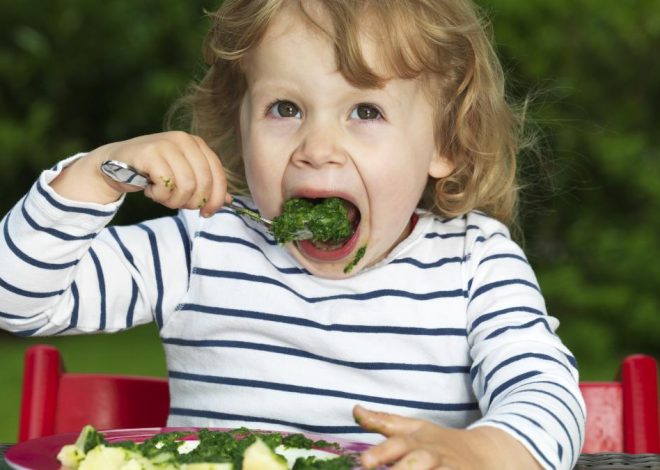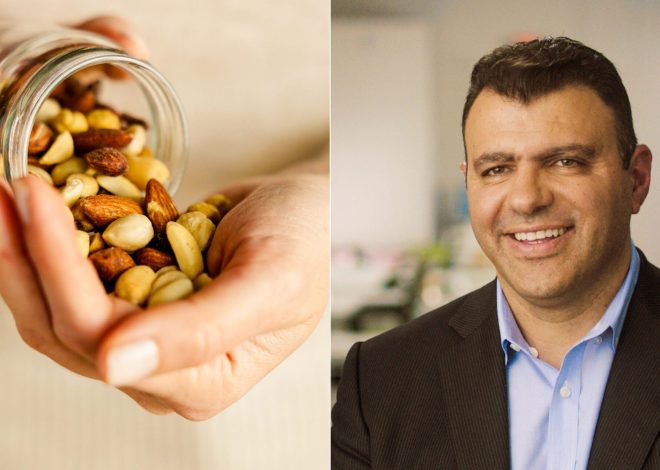
Nutrition of the future – Will we soon be eating meat and chocolate from the laboratory? – Knowledge
Tilo Hühn grew up on a farm and later worked as a farmer. Today he has largely swapped green nature for gray laboratories. As a professor of food technology, he researches the nutrition of the future at the Zurich University of Applied Sciences (ZHAW).
Among other things, he came up with the idea for two plant-based counterparts of laboratory meat: avocados and cocoa beans from the bioreactor.
The regions where avocados and cocoa beans are harvested are subject to climate change.
It is no coincidence that he decided to recreate these exact plants in the laboratory. “The regions where avocados and cocoa beans are harvested are subject to climate change. “More intense climatic events and the resulting plant diseases put production under pressure,” says Hühn, explaining his choice. For this reason, cocoa is becoming more expensive. And: Growing avocados requires a lot of water. “This means that people in certain growing areas have almost no drinking water left and can no longer irrigate their crops.”
This is where Tilo Chicken wants to start. His goal: to decouple the production of guacamole and chocolate from avocado and cocoa cultivation by propagating cells from these plants using raw materials grown in Switzerland.
Avocado and cocoa from the bioreactor
Hühn works closely with researcher Regine Eibl to implement his idea. She is a professor of cell culture technology, also at the ZHAW Wädenswil. «The procedure is always the same, no matter what fruit or berry I use. First I take the Part of the plant that I want to propagate and sterilize it to kill bacteria and fungi.” Regine Eibl’s team then divides the fruit – for example an avocado or a cocoa bean – into pieces and then places them on a so-called culture medium. This contains sugar, nitrogen, vitamins and plant hormones and thus feeds the cells.
Over time, wound tissue forms at the interfaces. As soon as there is enough of it, this wound tissue is converted into a liquid. This so-called suspension culture – a liquid in which the free-floating cells are located – is then aerated in the bioreactor, shaken and kept at an ideal temperature so that the cells can multiply under optimal conditions.
Once the cells have replicated sufficiently often, they are harvested. But not a complete cocoa bean or avocado fruit. Rather, it is a slurry, a pile of cells, or as Eibl calls it: a biomass. “In the case of avocado, you can add spices to this biomass and the guacamole is ready,” says Eibl. After harvesting the chocolate cells, they are freeze-dried, roasted and further processed into chocolate.
The interesting thing is that the wound tissue does not have to be reapplied every time. It grows back, can be stored and reproduced again and again in the bioreactor. So you don’t always need new avocados and cocoa beans to make guacamole and chocolate.
Not a marketable product yet
Regine Eibl and Tilo Hühn are not yet developing any sellable food at the ZHAW. Rather, they are researching the cultivation of avocado and cocoa cells and, for example, investigating what effects the type of bioreactor has on the taste of laboratory chocolate.
The consistency is like chocolate, and so is the taste. What really strikes me is that it definitely has a ‹berryy› taste.
Former students of Regine Eibl want to bring ZHAW laboratory chocolate onto the market with their startup “Foodbrewer”. You can already taste their chocolate. Tobias Müller, presenter of the SRF program Einstein, was allowed to test eat it. His conclusion: “Consistency is like chocolate, and so is the taste. What really strikes me is that it definitely has a “berry” taste. Actually sounds pretty good.
The example of “laboratory chocolate” shows that in theory it already exists, the edible food of the future grown in Swiss laboratories. However, they are not yet available in supermarkets and restaurants. When asked what it still takes before we can buy laboratory-grown guacamole and chocolate in Switzerland, Tilo Hühn answers: “In terms of technology, I would say: not much. “But of course financial resources are needed to complete the scaling phase.” Specifically, this means: Chocolate and avocado grown in a bioreactor are still too expensive.
The scaling hurdle: The burger for a quarter of a million Euro
The story of the first burger from the bioreactor illustrates how central scaling is for successful market entry. In 2013, Mosa Meat had the first burger made from cultured meat tasted in front of the camera. This burger cost a quarter of a million euros to make. “The burger was so expensive in 2013 because we were producing it on a very small scale back then,” Mosa Meat explains the price at the time on the company website.
Today Mosa Meat is preparing to enter the market. A burger patty should now cost less than 10 euros. But this required years of research and investments worth millions. As an ETH professor, Ori Bar-Nur himself conducts research with so-called in-vitro meat. “If we want to grow muscle cells in the laboratory, we have to feed them. To do this, we have to produce a nutrient medium that can potentially be very expensive,” says Ori Bar-Nur. One of the central questions is how the medium that supports cell proliferation can be made more cost-effective.
Regine Eibl also sees the big challenge here with guacamole and chocolate. According to the researcher, we have to work on cheaper culture media and also manage to cultivate the cells in inexpensive bioreactors.
The approval hurdle: A long road to approval
If scaling is successful, that does not mean that the products can be brought directly to consumers. In many parts of the world it is not yet permitted to sell food from bioreactors.
In Switzerland, the Federal Office of Food Safety and Veterinary Affairs (BLV) has only received a single application for approval for a food product from a bioreactor: In the summer of 2023, the Israeli start-up Aleph Farms submitted an application for a cultured beef steak together with Migros. According to the BLV, the approval process will take around two years. A comprehensive dossier is required. Food safety is particularly important, says BLV media spokeswoman Sarah Camenisch when asked.
“The approval process is very complex. “But the intention behind it is also consumer protection,” says Hühn, commenting on the procedure. But even with approval, the last and possibly most important hurdle for laboratory foods has not yet been overcome.
The acceptance hurdle: Do we even want food from the laboratory?
“Consumer acceptance is central,” says Tilo Hühn. “There’s this old saying, ‘What the farmer doesn’t know, he won’t eat.’”
The Gottlieb Duttweiler Institute conducted an online survey last year to investigate this question. The results of the study are sobering: 66 percent of the Swiss surveyed consider it unlikely that they would try laboratory meat.
The study did not examine the acceptance of chocolate and guacamole from the laboratory. Regine Eibl is optimistic: “I think it is important to convey how these products are made. Not many people can imagine that. But ultimately – that’s my opinion – it’s all a question of taste.”
We will perhaps know in just a few years whether good taste will actually be the deciding factor. Tilo Hühn and Regine Eibl expect that the results of their research could be in Swiss supermarkets in around five years. Until then, further open questions need to be clarified. For example, sustainability is a big issue. This can differ between different products. When asked whether the production of her cell culture guacamole and chocolate is more sustainable, Regine Eibl answers: “Based on our data on cocoa and guacamole, we can assume that these are very sustainable production processes.”
Man has learned to deal with fire. Then he domesticated animals and plants. And now we are taking the next steps – and domesticating cells.
According to Tilo Hühn, cell cultures are the next logical step in the development of nutritional history. “You can imagine that if hunters and gatherers, who have coexisted with farmers for a while, came to a cultivated field and saw that people were domesticating animals and selectively growing plants and even fermenting drinks – then it must be for them “It would have been a huge culture shock.”
Hühn advocates that we deal with what it actually means to produce cell cultures. Because it’s not that new. «Humans have learned to deal with fire. Then he domesticated animals and plants. And now we are taking the next steps – and domesticating cells.”

Ethel Purdy – Medical Blogger & Pharmacist
Bridging the world of wellness and science, Ethel Purdy is a professional voice in healthcare with a passion for sharing knowledge. At 36, she stands at the confluence of medical expertise and the written word, holding a pharmacy degree acquired under the rigorous education systems of Germany and Estonia.
Her pursuit of medicine was fueled by a desire to understand the intricacies of human health and to contribute to the community’s understanding of it. Transitioning seamlessly into the realm of blogging, Ethel has found a platform to demystify complex medical concepts for the everyday reader.
Ethel’s commitment to the world of medicine extends beyond her professional life into a personal commitment to health and wellness. Her hobbies reflect this dedication, often involving research on the latest medical advances, participating in wellness communities, and exploring the vast and varied dimensions of health.
Join Ethel as she distills her pharmaceutical knowledge into accessible wisdom, fostering an environment where science meets lifestyle and everyone is invited to learn. Whether you’re looking for insights into the latest health trends or trustworthy medical advice, Ethel’s blog is your gateway to the nexus of healthcare and daily living.




